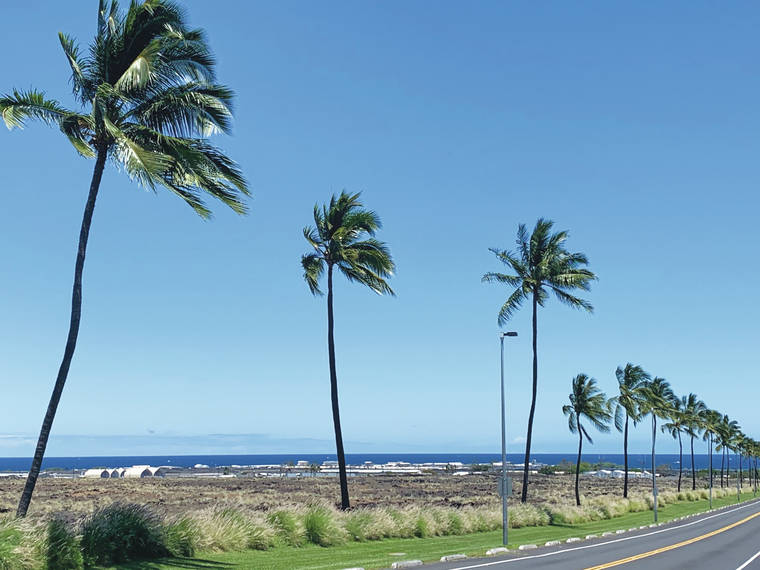When the first Polynesians arrived in these Islands, there were very few plants available as a food supply. Fortunately, they brought a great variety with them that we refer to as canoe plants. These included, banana, sugar cane, breadfruit, mountain apple taro, coconut and scores of others. They also brought pigs, jungle fowl and rats that changed our forests forever. At first, Hawaiians had to survive on food from the sea, seabirds, flightless birds and others that soon became extinct. Once they established their gardens, life likely became much easier.
Today, Hawaiian gardens are abundant, with fruits, nuts and vegetables from all over the world thanks to the contributions of the many cultures that call Hawaii home.
Hawaiian gardens include hundreds of species of rare palms, but by far, the most popular is the coconut. When it comes to species of palms in the world, there are thousands with more discovered each year. They come from the high mountains like the Andean wax palms that live at 13,000 feet above sea level to equatorial rainforest species like those from the Amazon. Desert palms are another large group, but none is quite so close to our Hawaiian hearts as the coconut palm. The coconut palm group is composed of scores of varieties including some dwarf types that should be used more in Hawaii. Not only are they shorter and easy to harvest, they are resistant to a devastating disease referred to as lethal yellowing. Our endemic loulu palms (pritchardia species) are very prone to this disease.
Palms here have few serious diseases at present. Hawaii’s palms may be affected by bud rot or stem bleeding disease that is often caused by physical damage such as unsanitary pruning equipment or climbing spikes. Most palms showing yellow or stunted growth have been found to be suffering from lack of fertilizer or water. For example, a recent report came from concerned citizens calling about the dead and dying trees around the island. The trees simply need a balanced fertilizer plus minor elements, applied three to four times per year, and regular irrigation. Over-pruning or removal of too many leaves can also cause their demise by creating a condition called pencil top. The trunks become thinner and are prone to snapping off just below the crown. All these problems are correctable, but if lethal yellowing ever got to Hawaii, there is no practical way of stopping destruction of our islands’ palms. Not only would coconut palms be destroyed, but over a hundred species of native and exotic palms would also die.
This disease, originally thought to be exclusive to coconut palms, occurs in the West Indies, Florida, Texas, Mexico and Africa. A similar disease occurs in the Philippines.
Lethal yellowing hit Florida in the middle 1950s. After a number of years it killed most of the coconut palms. Research showed that all varieties of coconuts are susceptible to lethal yellowing. The degree of susceptibility has been the point for developing varieties that are resistant. The dwarf types are least susceptible.
When lethal yellowing hit the mainland of Florida, it was discovered that many other palms were also susceptible to the disease in varying degrees. According to the University of Florida, lethal yellowing Research Station in Fort Lauderdale, hundreds of other palms are susceptible like the Manila palm, fishtail palm, loulu palm, date palm, oil palm and many others.
Mycoplasma like organisms, that occupy a niche between a virus and bacteria, are the cause of lethal yellowing. St. Augustine lawn grass can be a reservoir for the disease and a sap sucking leafhopper appears to be the main vector. At this time neither the disease nor leafhopper have been found in Hawaii. As a matter of precaution we should be planting the disease resistant form wherever possible. As our old coconut palms get too tall to safely prune, plant young dwarf palms to take their place.
Hawaii is fortunate to be far from disease infected regions, but it is vital that we don’t introduce this and other plant plagues. It is important to cooperate with the Hawaii and Federal Departments of Agriculture and follow all the rules of inspection.
Don’t be the cause of this plague or any others by intent or carelessness.

